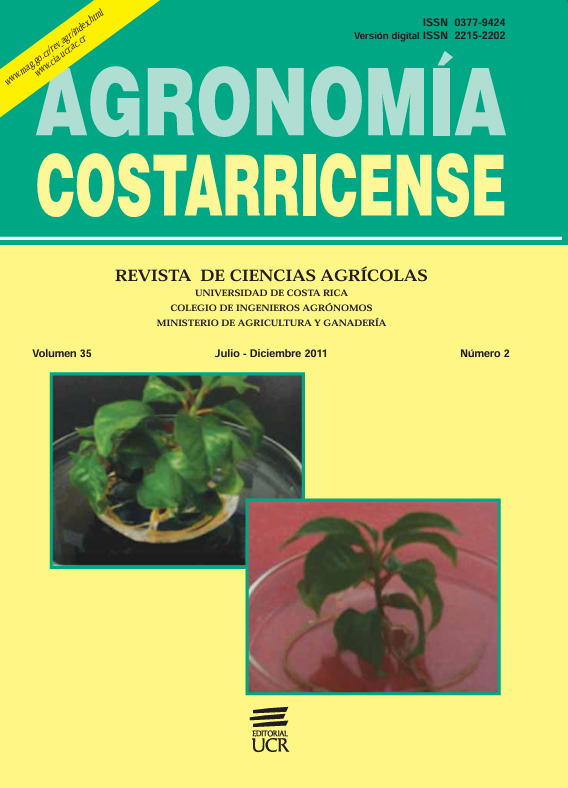Abstract
Pilon (Hieronyma alchorneoides Euphorbiaceae) is one of the native timber species of Costa Rica best adapted to conditions of open plantation. Due to its growth characteristics and variety of uses, the demand for planting material has increased. This species presents serious problems with seed reproduction; it is a dioecious, the fruit production varies over time and between trees, trees produce large quantities of fruit but are heavily predated by different birds. In recent years, the percentage of damaged fruit has increased due to wasps and the seeds lose their ability to germinate within days of harvest (recalcitrant). These factors make micropropagation an attractive option for mass propagation of the species. In the present study various stages of in vitro cultivation were evaluated. The aseptic establishment of the embryos was achieved by scarifying the seeds with concentrated sulfuric acid for 10 min, followed by incubation in 5.5% sodium hypochloride (NaClO) for 30 min, then embryos were inoculated on the culture medium described by Murashige and Skoog (MS) without growth regulators. When vegetative material was used as initial explant, the use of 0.095% mercuric chloride (HgCl2) during 5 min, allowed 50% of cuttings to develop shoots under aseptic conditions on a simple MS medium. It was observed that pilon does not require the addition of growth regulators during bud induction nor in the multiplication stages.During rooting, the addition of indole butyric acid (IBA) at concentrations of 0.1 mg.l1 promoted the highest percentage of rooted shoots (80%), the largest number of roots per stem (5.0) and the best quality of the roots formed.Survival of in vitro plants after acclimation under greenhouse condition reached 70%.

This work is licensed under a Creative Commons Attribution-NonCommercial-NoDerivatives 4.0 International License.
Copyright (c) 2016 Agronomía Costarricense

